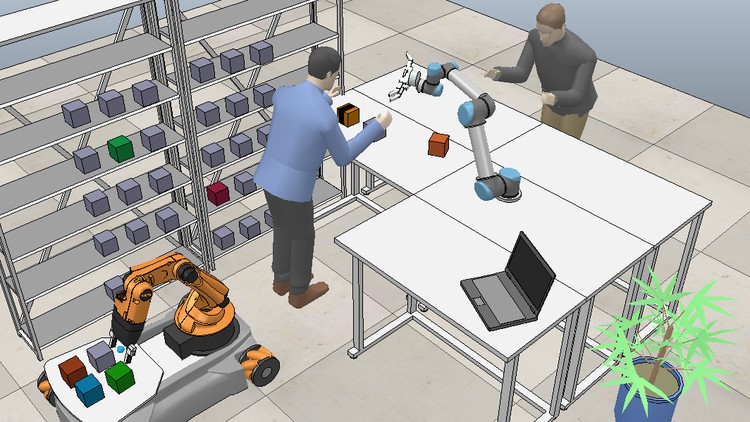
Learn the fundamentals to understand, design, and evaluate Human-Robot Interaction (HRI) systems
What you will learn
Learn about the fundamentals of the Human-Robot Interaction (HRI) area.
Understand HRI design concepts such as: interface design, productivity, and safety.
Study evaluation metrics of HRI systems such as: mission effectiveness, human and robot efficiency, cognitive indicators, among others.
Understand design concepts such as level of autonomy from the HRI point of view, types of robot models, team structure, among others.
Design the taxonomy of an HRI system
Measurement of human factors such as mental and physical work demand, sleepiness, among others.
Artificial intelligence applications in HRI systems
Design and evaluate HRI systems for different applications
Description
This course presents the fundamentals of a new area of research related to robotics called Human-Robot Interaction (HRI), which is based on the physical, cognitive, and social interaction between humans and robots. The HRI area focuses on understanding, designing, and evaluating the interaction between humans and robots that can communicate and/or share the physical space or workspace. The motivation for using HRI systems for an application where humans and robots can interact and cooperate is to reap the benefits of both worlds. For example, robots are great at performing repetitive and precise tasks, but they are not always useful for tasks that are complex or performed in unstructured environments. Humans, on the other hand, are excellent at complex manual tasks, have creativity, and excellent problem-solving skills, but tend to get tired or distracted easily. Among the main benefits of collaboration between humans and robots is to increase the productivity or efficiency of a process or a particular task, while reducing the workload of the human, and giving support to it in tasks that require it.
The theoretical foundations of the course, as well as the applications and case studies presented, will serve as a basis for students and professionals to work or investigate various applications that are not easy to fully automate, and that can benefit from interaction and cooperation between humans and robots.
Content